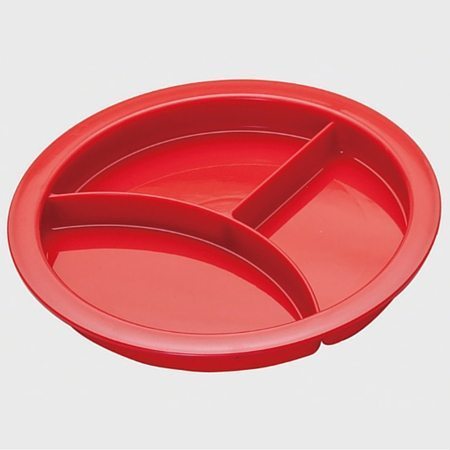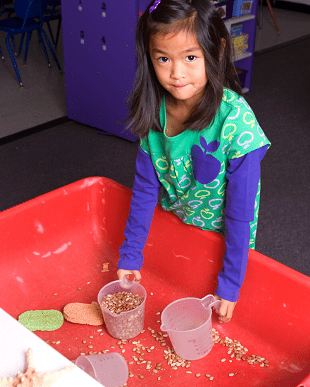Last updated on March 7th, 2024 at 06:02 pm
Do you think your child might have a Sensory Processing Disorder? Read about what SPD is and learn some strategies to cope with it.
Generally speaking, our body’s sensory system does an excellent job doing what it was made to do. Our body and mind perceive information primarily in relation to six sensory categories: touch, hearing, smell, taste, vision, and vestibular.
Our sensory system is our body and mind’s ability to receive sensory stimuli from the environment around us, process them, and produce a response to that stimulus. For many of us, this happens without us even knowing it. For example, many individuals report being able to work better when chewing gum. Sometimes, the sensory system does not function as it should and stimuli are perceived differently, thus causing a different reaction that can be negative. This is when an occupational therapist can help and offer some guidance to help individuals function in a confusing world.
Need some twin parent friends? Get the support you need with a Twiniversity Membership. Benefits include a monthly twin parent club meeting on Zoom, access to a private Facebook group just for twin parents, and a video library of twin parenting lessons. Visit Twiniversity.com/membership to join today!
Are Certain Kids More Prone to SPD?
We know that children with a certain diagnosis, such as attention deficit and hyperactivity disorder (ADHD), autism, and prematurity to name a few, will most likely exhibit some sensory processing symptoms. Most children will develop typically but still may exhibit sensory processing difficulties with no real explanation. As parents, we may recognize that our child’s behavior is not normal when compared to other children, but concerns may be brushed off from other parents or pediatricians when we ask for advice.
Children are often not diagnosed or treated for sensory processing difficulties until they begin to struggle in school. Sensory Processing Disorder (SPD) has been researched by the medical community and deemed an appropriate stand-alone diagnosis, yet it has not been added to the current published diagnostic manuals. When a child does not have an existing diagnosis, many professionals are quick to state that a child is just exhibiting bad behavior. The reality usually is they are acting out as a sensory response when they are unable to process the stimuli appropriately, meaning their sensory system is not functioning properly.

Types of Sensory Processing Disorders
When kids are tested and show scores indicating a possible sensory processing disorder, they can fall into one or more of the following four categories: poor registration, sensory sensitivity, sensation avoiding, and sensation seeking. It is common to score in different categories with different senses; for example, a child may be sensation avoiding with auditory stimuli and sensation seeking with vestibular stimuli.
Poor Registration
These children have difficulty perceiving sensory stimuli and thus have difficulty producing a correct response to the stimuli in their environment. These kids often appear tired, withdrawn, fail to notice other kids or adults around them, and may have poor endurance and weak muscles. Teachers and parents often report having to speak loudly and more often to get this child’s attention and may even need to touch them to gain their attention.
Strategies: Play upbeat music during daily tasks, rub lotion on the child before getting them dressed, provide different foods in different textures at meals, or play the TV in the background while playing. Try to dress the child in different textures of clothing and socks, play on different surfaces such as in the grass, sand, tile floor, or carpet. Maybe point out and name things you see while driving or on a walk, engage in silly tickle games or rough and tumble play before working on a task, have the child reach and bend down for clothes while getting dressed, and talk to and make silly sounds at and with your child.
Sensory Sensitivity
These children perceive stimuli within their environment more easily than others and often produce an over exaggerated response to these stimuli. These kids often appear hypersensitive, reactive, are easily distracted, are easily frustrated or upset, and may be extra cautious and appear fearful at times. Teachers and parents often report these children seem demanding or defiant in certain situations.

Strategies: Provide 1-2 toys at a time during play or bath time. Play soft instrumental music during stressful activities. Know the child’s preferred foods and don’t change them. Use a divided plate at meal times. Reduce distractions at play or work spaces. Use rocking or gentle repetitive movements before bed or when they are upset. Create a quiet and dark environment for bedtime. Bring a favorite toy or blanket on outings. Attend public places during less busy times, and create and use a routine to use each day to complete daily tasks.
Sensation Seeking
These children often look to perceive certain stimuli within their environment because they find them enjoyable and sometimes comforting. These kids often appear over active and impulsive. Teachers and parents often report that these children are constantly moving and fidgeting throughout the day. They might also report that these children are loud and talk excessively or make noises out of boredom. These children are also reported to be the ones who have trouble keeping their hands to themselves and may be clumsy around large groups of other people.

Strategies: Sing to or with your child during different activities. Teach basic academic concepts through movement activities. Provide different foods in different textures at meals. Play music in the background during daily tasks or while playing. Add texture to finger paints and other toys. Have your child play barefoot on various surfaces. Leave a nightlight on at bedtime. Bring extra toys on outings. Encourage your child to walk, jump, etc. during outings and errands. Talk about what you see, hear and smell while on a walk or during an outing. Provide activities that involve using large muscles, such as pushing pieces of furniture or weighted push toys like shopping carts or baby strollers.
Sensation Avoiding
These children often avoid certain stimuli, and when they do encounter the disliked stimuli, they have negative reactions to them quickly. These children often appear rigid and need the same structure daily. They also withdraw quickly within large groups or in new places/activities. Teachers and parents often report these children as stubborn, controlling, quick-tempered, fearful, and easily withdrawn.
Strategies: Use a wipe warmer with infants. Fill the bathtub before child is in the bathroom. Keep foods at similar temperatures and textures during meals. Use coated utensils at meals. Have your child sit in the same seat at the table for each meal. Present one food at a time during meals. Keep play areas clean and uncluttered. Present 2-3 toys at a time during play. Allow child to have quiet places to play. Create a nighttime routine for bed. Create a quiet and dark environment for bed time. Attend outings when areas are less busy and crowded. Discuss changes and what may happen when doing something new with your child. Offer a quiet space to be alone when upset and respect their desire to be alone. Use a similar routine every day to complete daily tasks.
The idea behind sensory treatment is to help parents and children recognize their sensory deficits and then teach them more appropriate ways to cope and meet their sensory needs. You should never restrict a child from achieving their desired sensory need. Instead, occupational therapists (OTs) teach new and appropriate ways to meet that need. If you deny the child from meeting their sensory needs without teaching an alternative, they will come up with another way to meet their needs, and this new behavior might be just as negative as the first behavior. This is where OTs and their knowledge of sensory treatment are most helpful for parents and children with SPD.

How Do I Get Help for My Child?
If some of this sounds like your child, you may be wondering what to do for him/her. You may be wondering where to begin to seek diagnosis and treatment. There are three main settings that seem best for treating Sensory Processing Disorder in young children.
Early Intervention (EI)
Children are eligible to be tested for EI services, free service if the child qualifies, from ages birth to 3 or 5 years old depending on the state. Once a child qualifies, a plan will be written and service providers will come to the home to work on skills with the child.
School-Funded Services
Children are eligible to be tested for school system services, another free service if the child qualifies. Once a child qualifies, a plan will be written and services will be provided at the school the child attends. These plans focus only on meeting goals related to education and the child’s ability to participate and function in a classroom.

Outpatient Clinics
Outpatient clinics may have more equipment or specialty sensory rooms designed to treat each child and will accept and bill most insurances and Medicaid. A plan will be created and services will be provided at the clinic. With insurance, you may have a limited number of visits available each year and may be responsible for some payment.
If you think your child may be experiencing sensory processing difficulties, contact your pediatrician and ask for a referral to an OT. Your pediatrician can also help guide you to which program may be most beneficial for your child.

Megan Carpenter has been an occupational therapist for 7 years with 5 years of experience in pediatrics at United Cerebral Palsy of Greater Birmingham. Megan is married and is also a mother of 3 year old twin girls who constantly keep her busy but fill her life with much joy. Megan can be contacted at mcarpenter@ucpbham.com with any questions related to the information in this article.
Related Articles
- What If My Child Needs an IEP?
- Helping Kids Make Sense of Their World: An Occupational Therapist Talks Sensory Integration
- School Daze: Parenting Twins With Opposite Learning Styles
Sources:
- Ahn, R.R., Miller, L., Milberger, S., & McIntosh, D. N. (2004). Prevalence of parent’s perceptions or sensory processing disorders among kindergarten children. The American Journal of Occupational Therapy, 58(3), 287-292.
- Dunn, W. (2007). Supporting children to participate successfully in everyday life by using sensory processing knowledge. Infants & Young Children, 20(2), 84-101.
- Dunn, W. (1997). The impact of sensory processing abilities on the daily lives of young children and their families: A conceptual model. Infants & Young Children, 9(4), 23-35.








